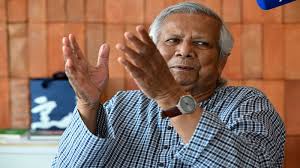If North Korean hackers are indeed behind the break-in at our nuclear plant, we must find out who they were working for
The hacking incident at the Kundankulam nuclear plant ought to scare the living daylights out of India’s security establishment as well as the rest of the world. As much talk as there was about “air gapped” systems, that is controlling computers that are not connected to the outside internet, our extreme vulnerability has hit home. Remember the way the Israeli security services, along with the United States’ Central Intelligence Agency (CIA), sabotaged the Iranian nuclear programme at the Natanz uranium-enrichment plant by destroying the electro-mechanical devices there, particularly centrifuges? There was also an “air gap” at Natanz, so the question is how was the virus loaded into the system? The bureaucratic response by the Computer Emergency Response Team-India (CERT-In) to this crisis and the WhatsApp malware row makes us wonder if Indian officials have read up, let alone learnt lessons from previous incidents. A basic understanding of such computer break-ins will show that no matter how advanced the control software — and Stuxnet was according to several computer programmers a “work of art” — it is a human in the chain who, thanks to lust or lucre, breaks the security fence. Almost every major hacking incident at high-security establishments, either in the military, government or the corporate sector, has broken down barriers. Investigations have to be conducted into them and the individual, who let the hackers gain control, must be weeded out and tried. In fact, this and not silly letters to the Prime Minister is what sedition and treason is all about.
Then there is the Democratic People’s Republic of Korea, or North Korea as we know it. What was the rogue nation’s interest in Indian nuclear facilities? While India does not have a friendly relationship with that nation, our relationship is not adverse either. That said, North Korea has often worked at the behest of China to do its bidding, whether it was to escalate tensions with the United States or transport missile technology to Pakistan. Besides, North Korea has frequently used compromised computers in India to hack Western targets, including banks. It reportedly cracked the financial systems of Bangladesh to steal $100 million a few years ago. There is little doubt that North Korea is a rogue State that presents a clear and present danger to India as well. It has taken advantage of our lax protocols surrounding cyber security and one can only hope that it has not done any more damage than is now apparent. And an attack of this nature on a N-plant could have disastrous effects, especially if the software controlling the nuclear reactor is compromised. It could trigger a theft, even a meltdown. Cyber security researchers have flagged the North Korean malware DTrack, which was used by hackers to attack financial and research centres in India. Its earlier version ATM Dtrack was apparently designed to hack our ATMs and read and steal data of cards that were inserted into these machines. India has to up its cyber defences in a hurry and should not find itself trying to desperately get out of a quagmire. At the same time, even though it is likely Kim Jong-Un won’t care, India should make it clear to North Korea that such activities are not welcome, and should start finding out where its agents are active in the country. If a report by Subex, which tracks cyber-security, is to be believed, then between April and June alone, cyber attacks jumped by 22 per cent.








 OpinionExpress.In
OpinionExpress.In















Comments (0)